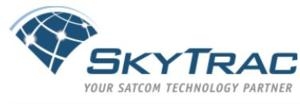Technology Widely Used In The Business Aviation Sector
Recent media focus on aircraft tracking technology underscores significant gaps in traditional approaches (radar, transponder, Automatic Dependent Surveillance-Broadcast (ADS-B), and radio communication). These technologies, or combinations of them, are typically used by the scheduled commercial air transport sector. The gaps are particularly relevant when tracking aircraft in remote areas where traditional tracking infrastructure can be limited, for instance outside radar coverage.

An alternative - satellite tracking technology - has been quietly tracking aircraft in other market segments for decades with great success and reliability rates. Satellite tracking was first developed and adopted over twenty years ago because no other technology was practical due to size, weight, or cost constraints. In some cases, for example aerial firefighting (part of ‘Aerial Work’ in Figure 1), flight tracking is now mandated by many aviation authorities because it offers the best solution for tracking complex low altitude aviation operations in remote locations with the possibility of congested airspace and potentially limited visibility. For off-shore oil and gas operations, satellite tracking is the preferred solution because it offers reliable tracking where there is often no radar coverage due to offshore, sea level landing pads and ‘over-the-horizon communications’ are not always available. In other cases, such as Air Medical Services, satellite tracking simply fits
the cost, size, weight and operational requirement perfectly.
The reliability, simplicity and cost effectiveness of satellite tracking systems raises key questions about why this technology is not used for scheduled commercial air transport sector.
SkyTrac Systems Ltd has been in the business of flight-following, monitoring flight data, and supporting aviation business’ for over twenty years. The high-tech company based in Kelowna BC has a global customer base of hundreds of operators who rely on SkyTrac’s innovations to ensure they know where their aircraft are at every moment of flight. What started out as a simple GPS-based aviation tracking system 20 years ago has developed into a complex and far-reaching flight monitoring capability that offers unforeseen advantages to operators all over the globe.
“We offer a simple and effective tracking solution to our customers” stated SkyTrac CEO, Stephen Sorocky. “Typically our customers are in the oil and gas, leasing, firefighting, medevac, charter, news or police aviation sectors. These operators regularly fly below radar coverage - if radar is even present - and often out of range of effective radio frequency communications, so they have sought solutions that offer them critical connectivity during their missions. They rely on our small, lightweight systems - no bigger than a toaster and weighing approximately 2 kilograms - to provide minute-by-minute tracking and to integrate flight data into their business operations on the ground. Besides tracking, our real-time data helps them with fundamental business operations such as billing, tracking pilot flight hours, or documenting passenger or cargo manifests. We also provide invaluable information for aircraft maintenance programs – engine data, fuel data, and other critical flight
system data – all transmitted off-board in real time.”
SkyTrac’s products are certified by Transport Canada, FAA, EASA, and ANAC so there are no regulatory barriers to installation on aircraft. SkyTrac’s ground-based software (‘SkyWeb’- refer to Figure 3) connects with the on-board hardware. SkyWeb provides mapping as well as a long list of smart tools to ensure there is a two-way information flow between the ground and the aircraft.
 ANN's Daily Aero-Term (05.05.24): Omnidirectional Approach Lighting System
ANN's Daily Aero-Term (05.05.24): Omnidirectional Approach Lighting System Aero-News: Quote of the Day (05.05.24)
Aero-News: Quote of the Day (05.05.24) Airborne 05.06.24: Gone West-Dick Rutan, ICON BK Update, SpaceX EVA Suit
Airborne 05.06.24: Gone West-Dick Rutan, ICON BK Update, SpaceX EVA Suit Airborne 05.03.24: Advanced Powerplant Solutions, PRA Runway Woes, Drone Racing
Airborne 05.03.24: Advanced Powerplant Solutions, PRA Runway Woes, Drone Racing Aero-News: Quote of the Day (05.06xx.24)
Aero-News: Quote of the Day (05.06xx.24)



